The document outlines the content and features of the book 'Practical Object-Oriented Design with UML, Second Edition' by Mark Priestley, which serves as a comprehensive guide for object-oriented programming using UML. It includes a case study on a restaurant booking system, covering software processes and UML notations, while also providing exercises and solutions to support learning. This edition emphasizes the relationship between UML design and object-oriented code development, making it suitable for students in computer science and software engineering fields.

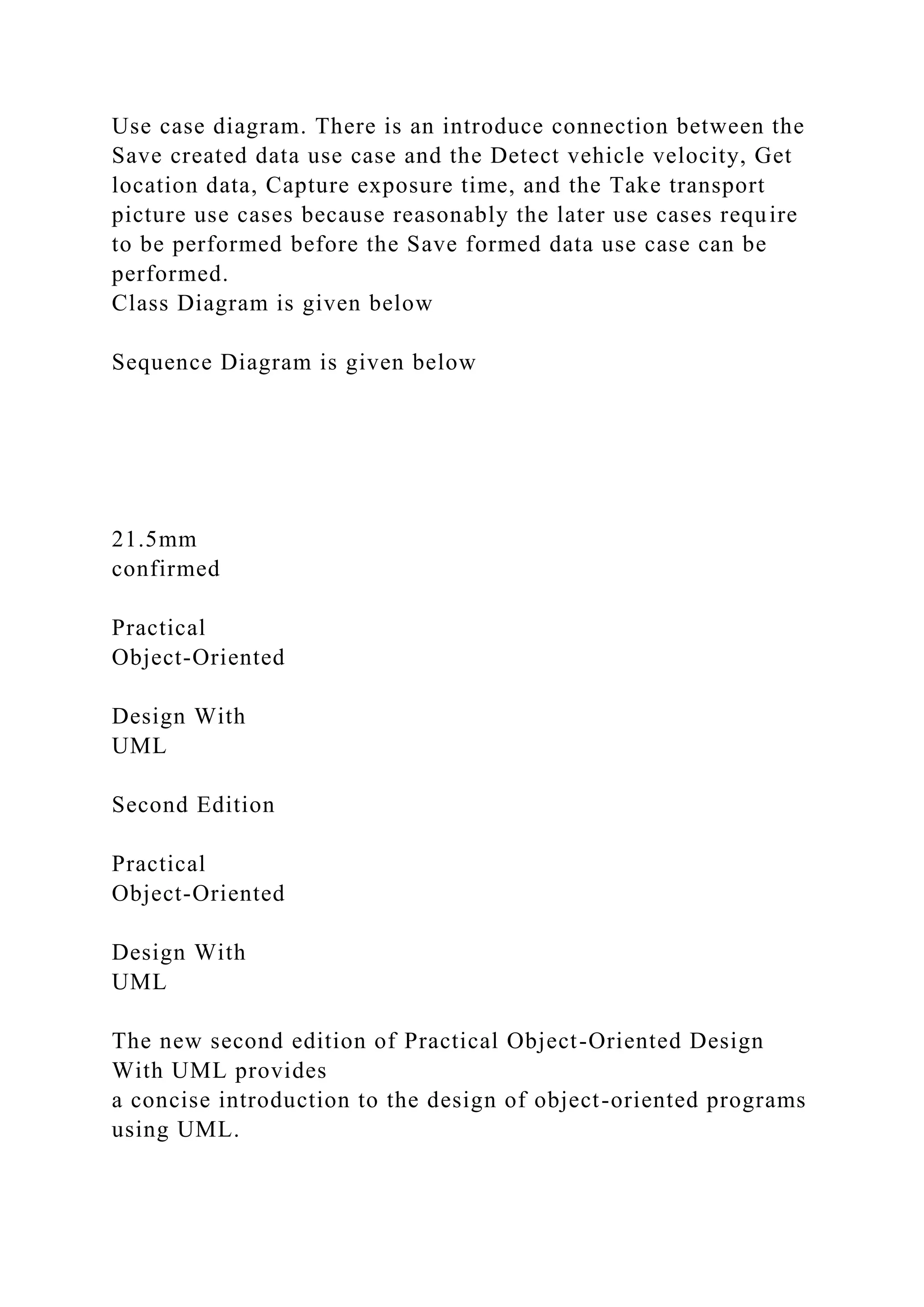
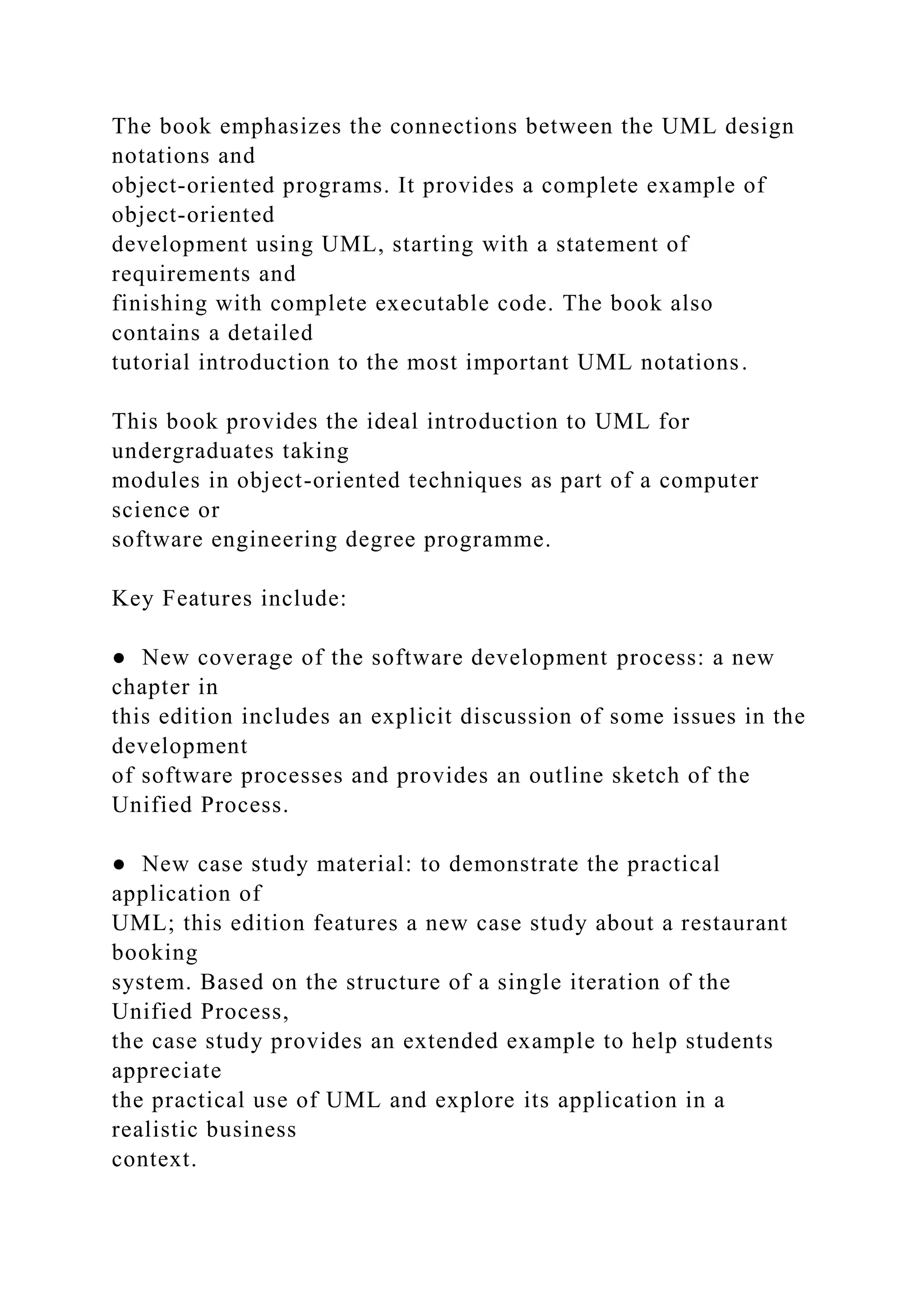
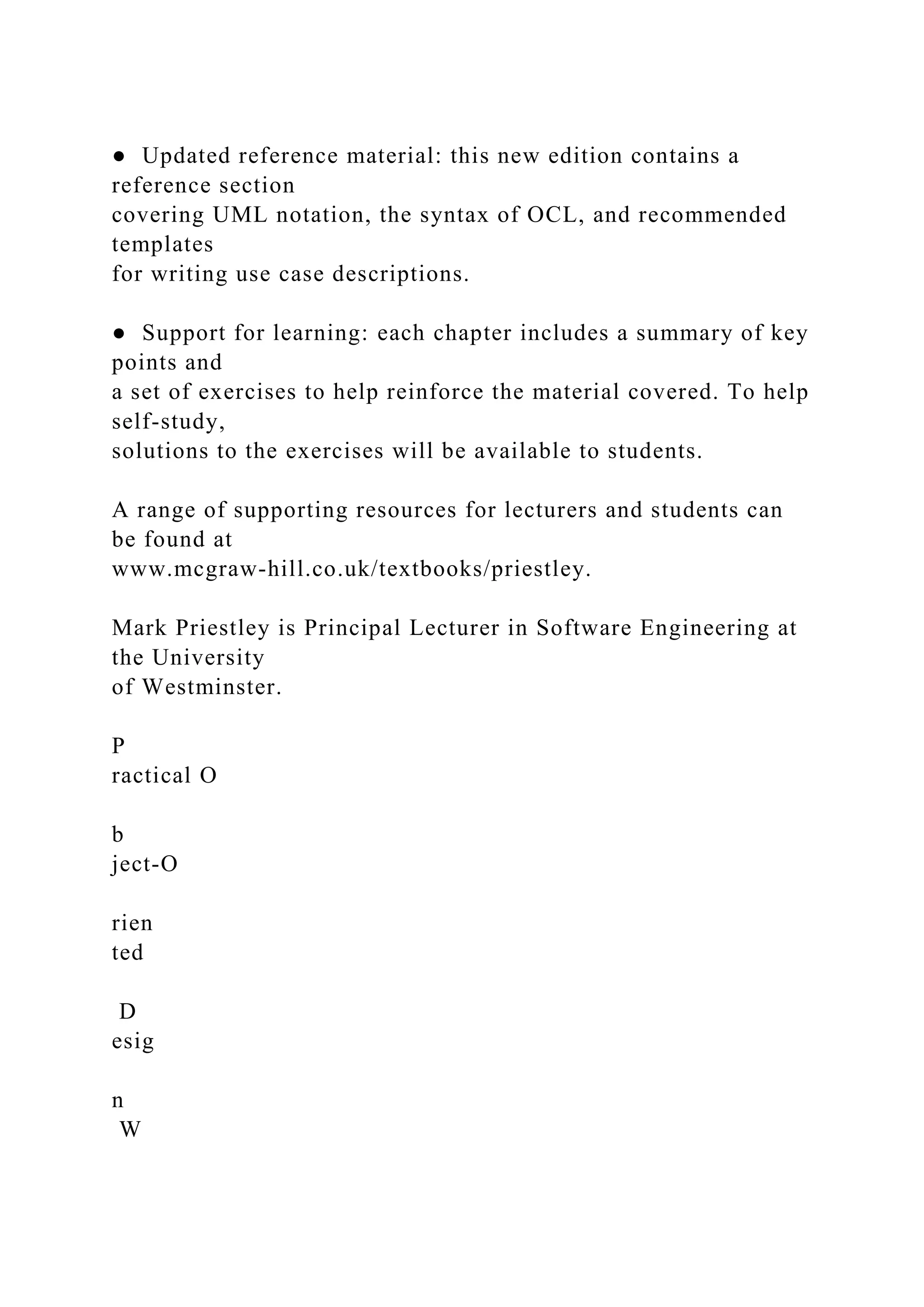
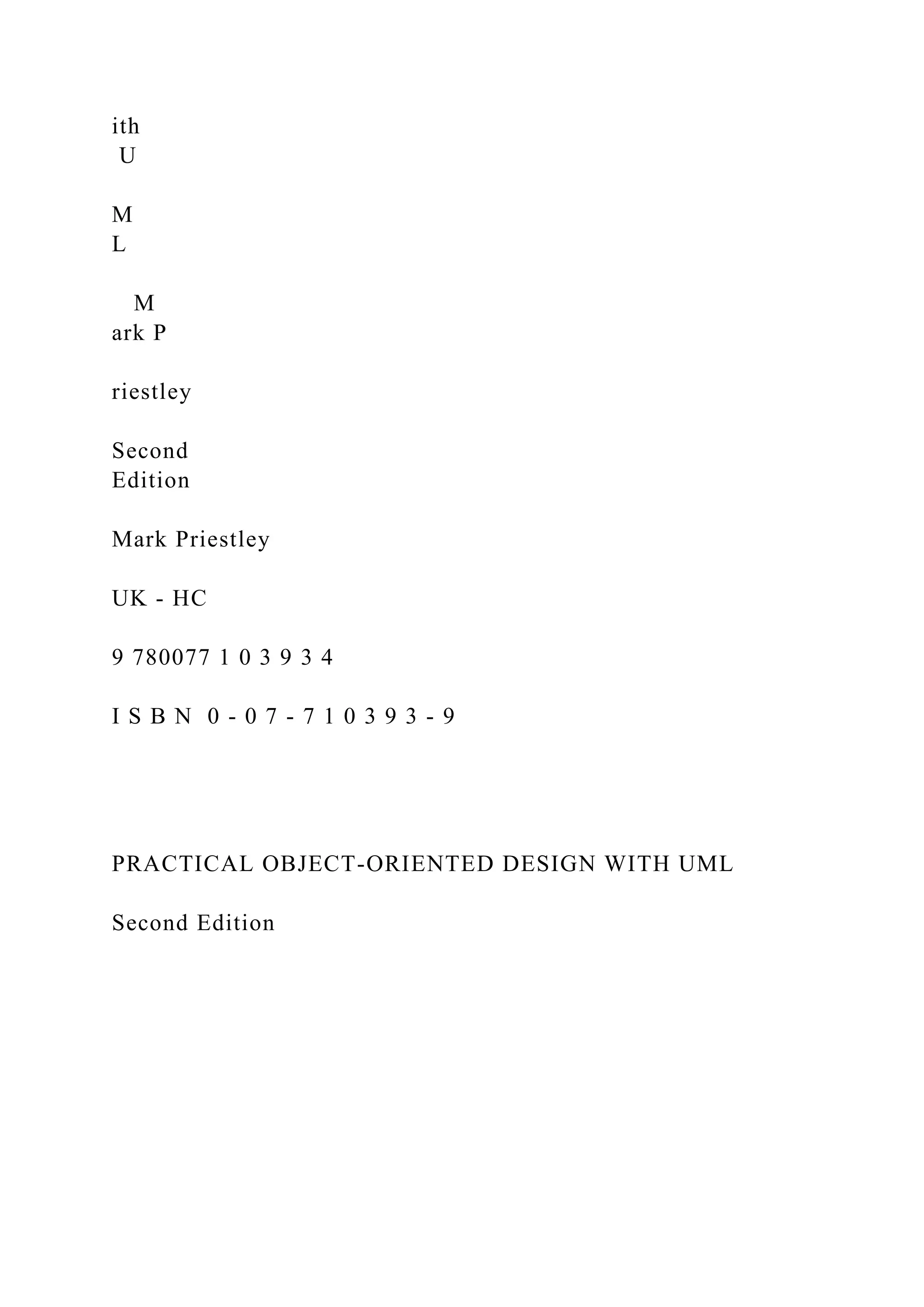
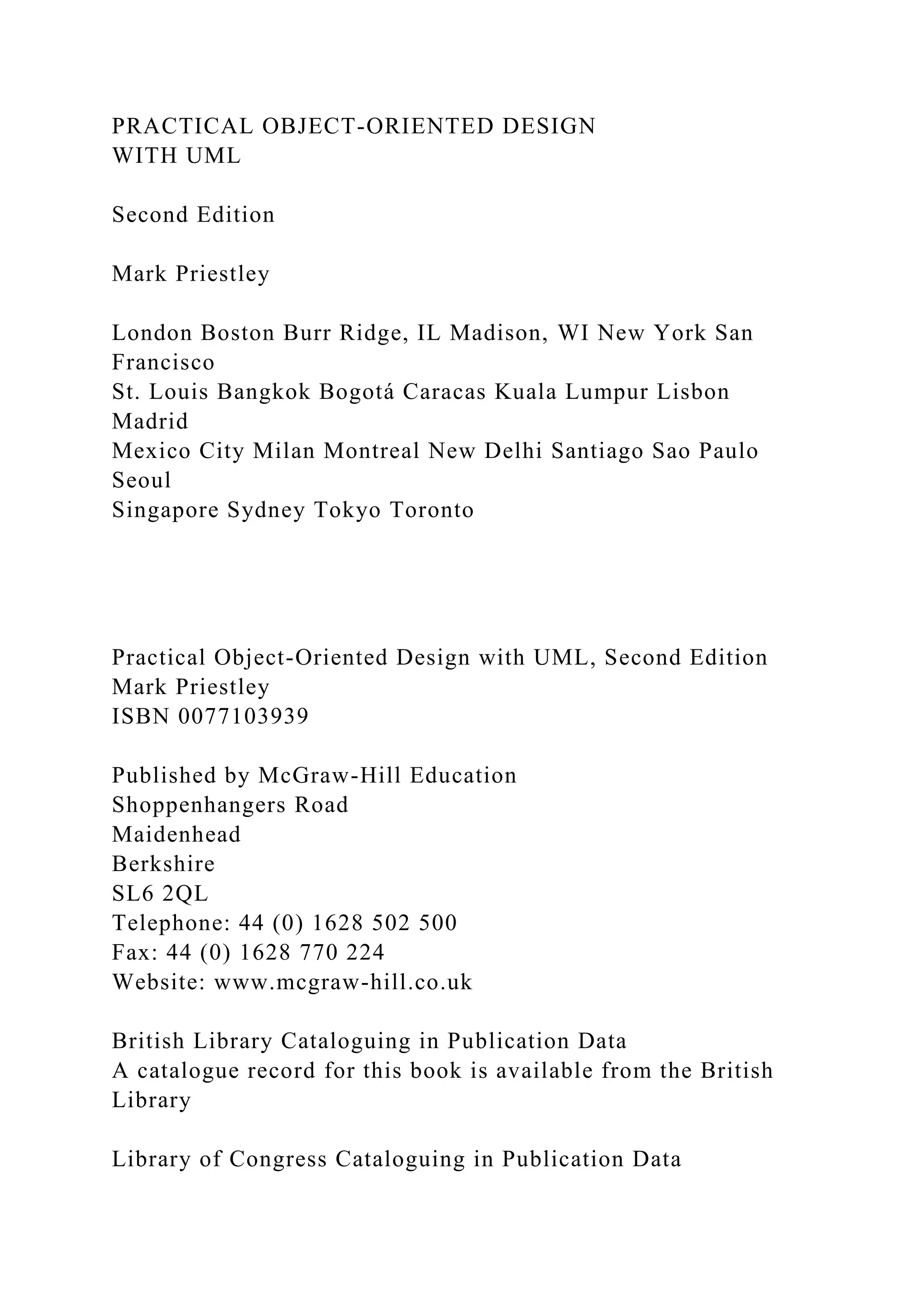
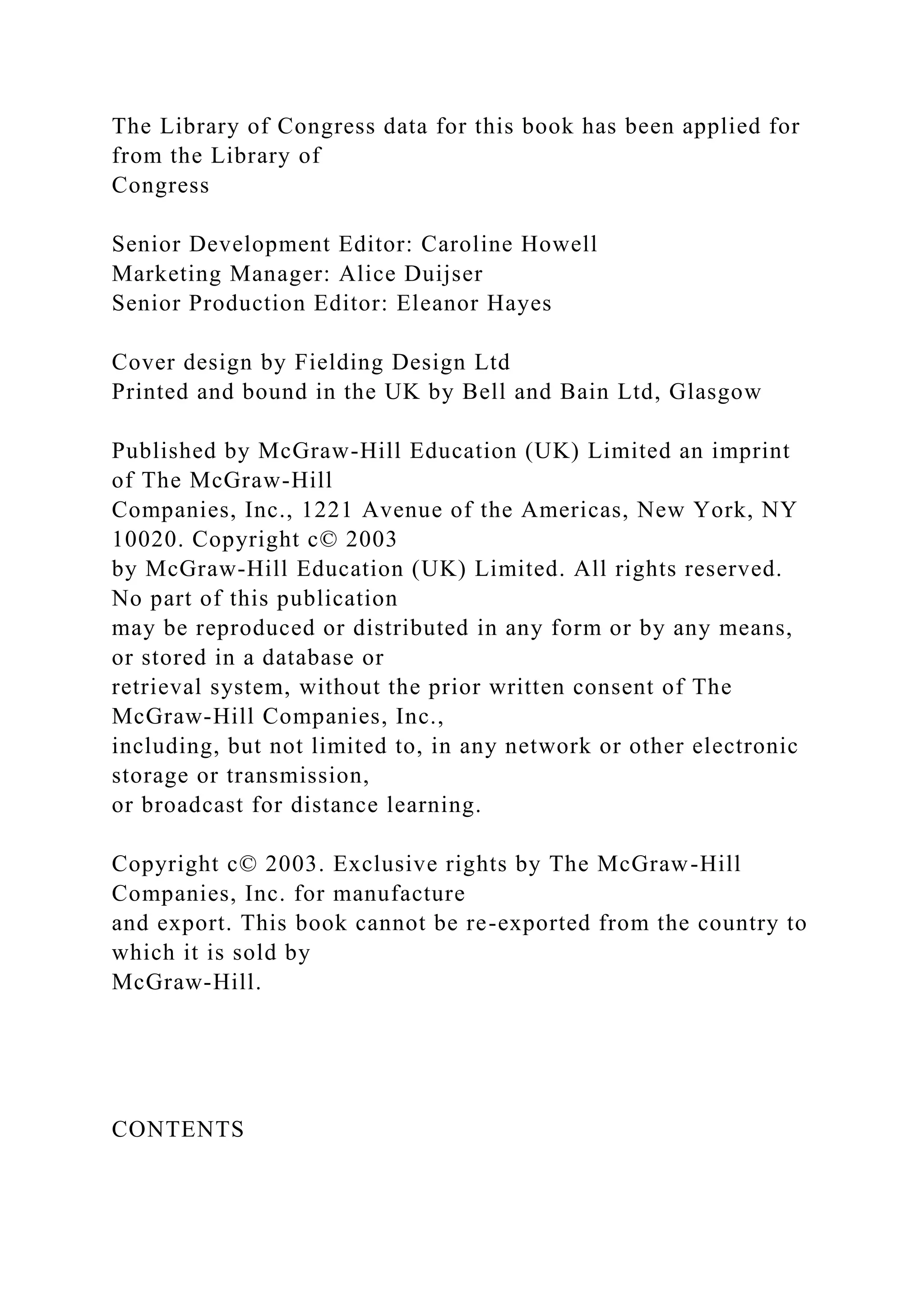

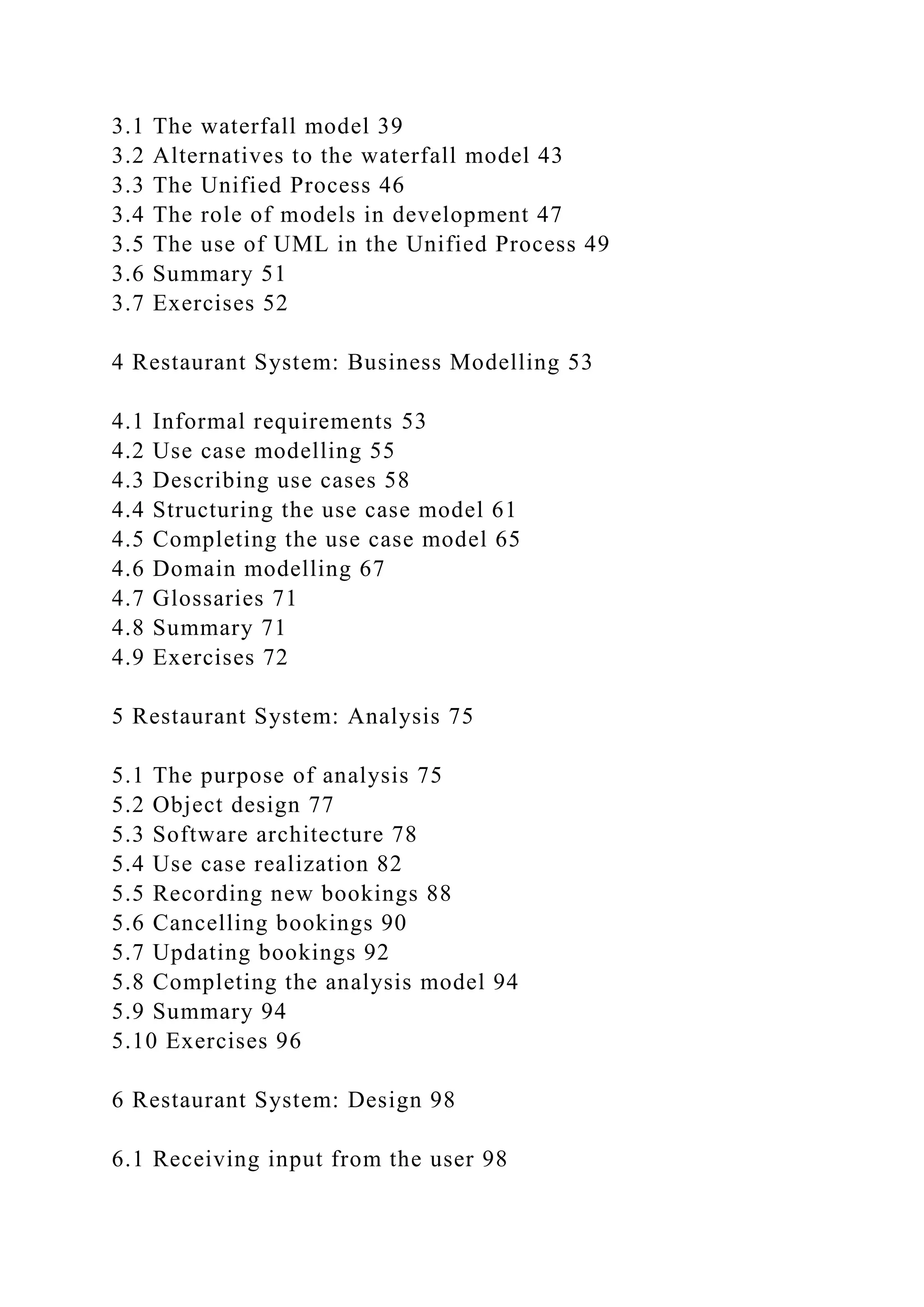
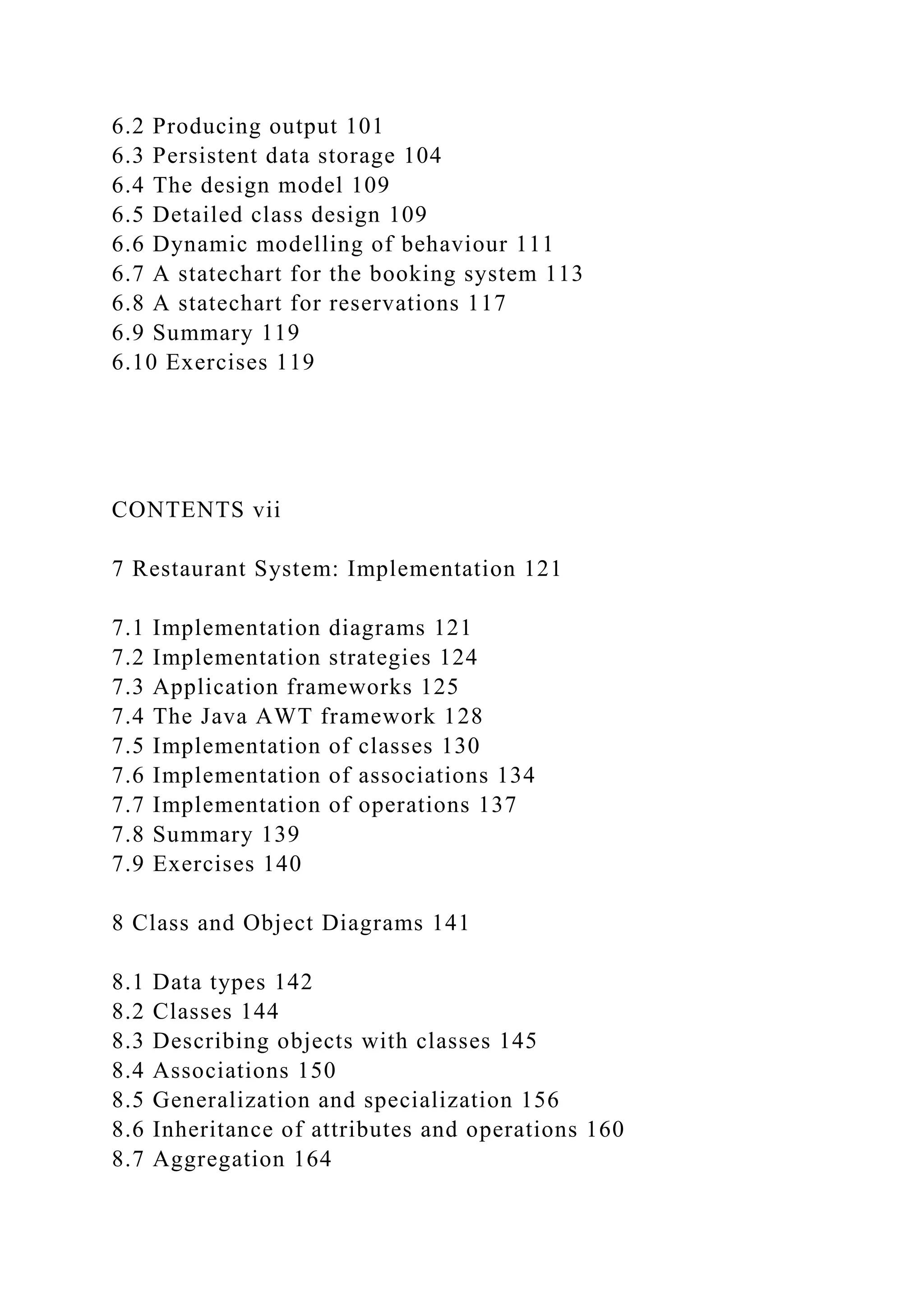
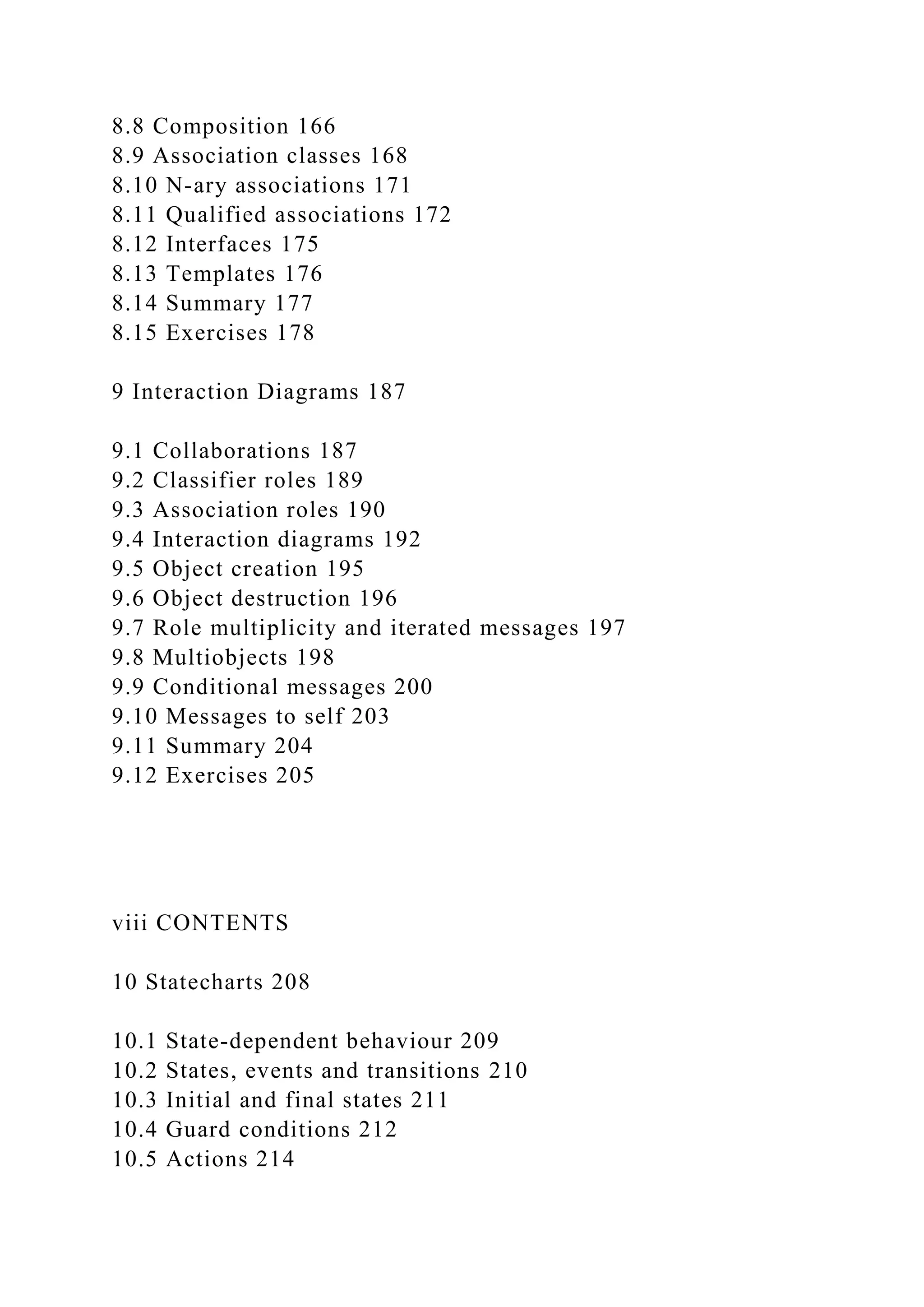


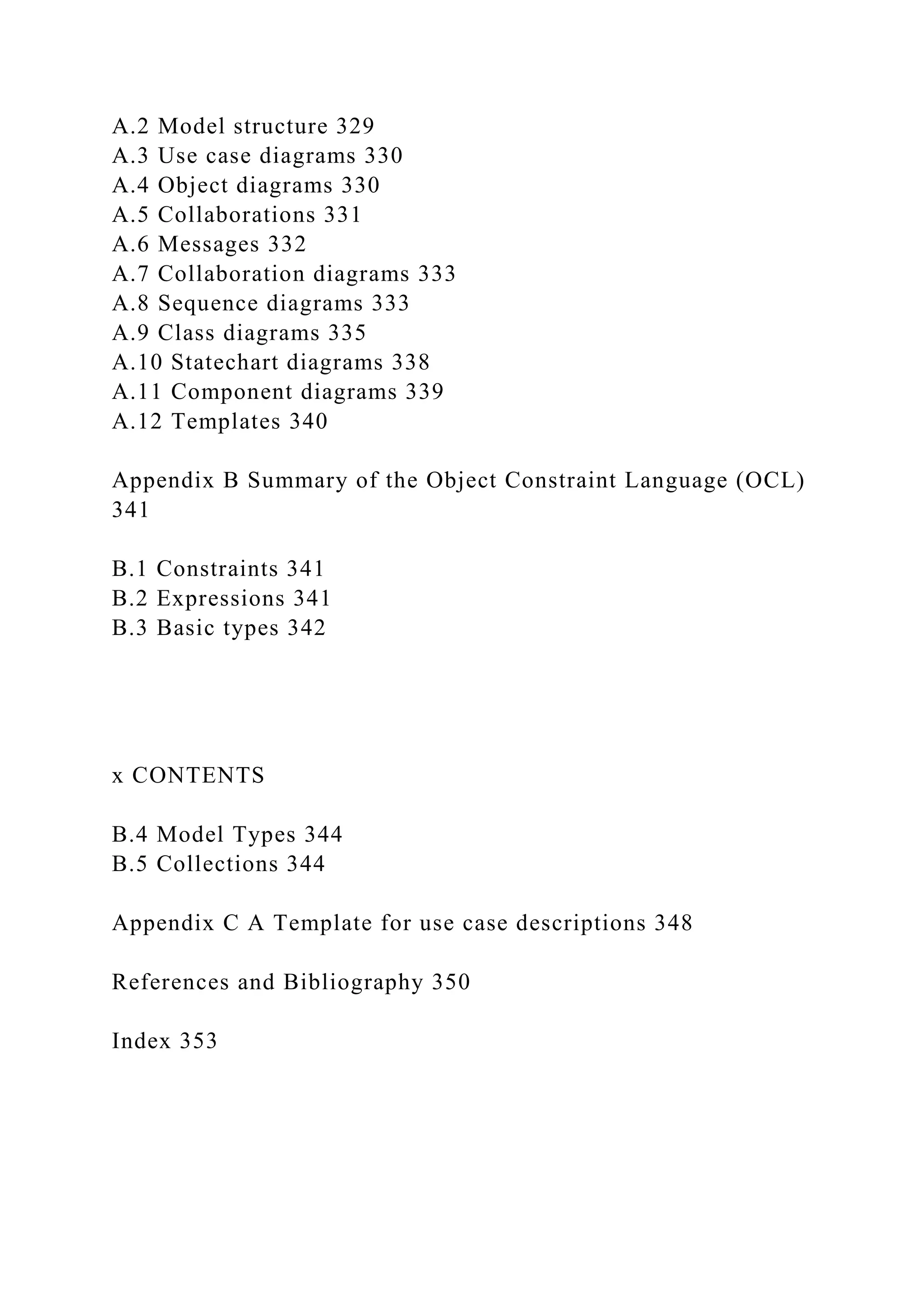
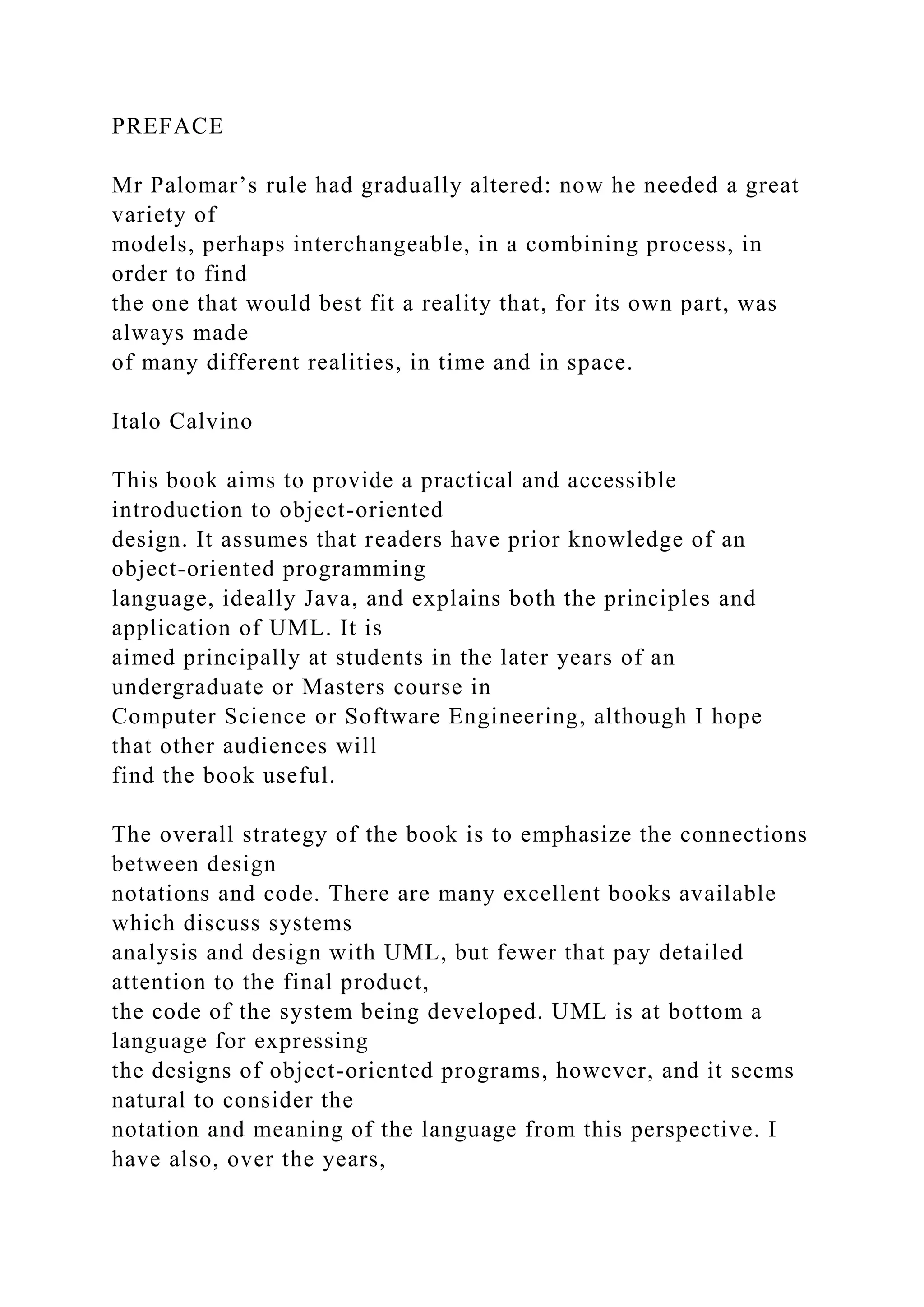
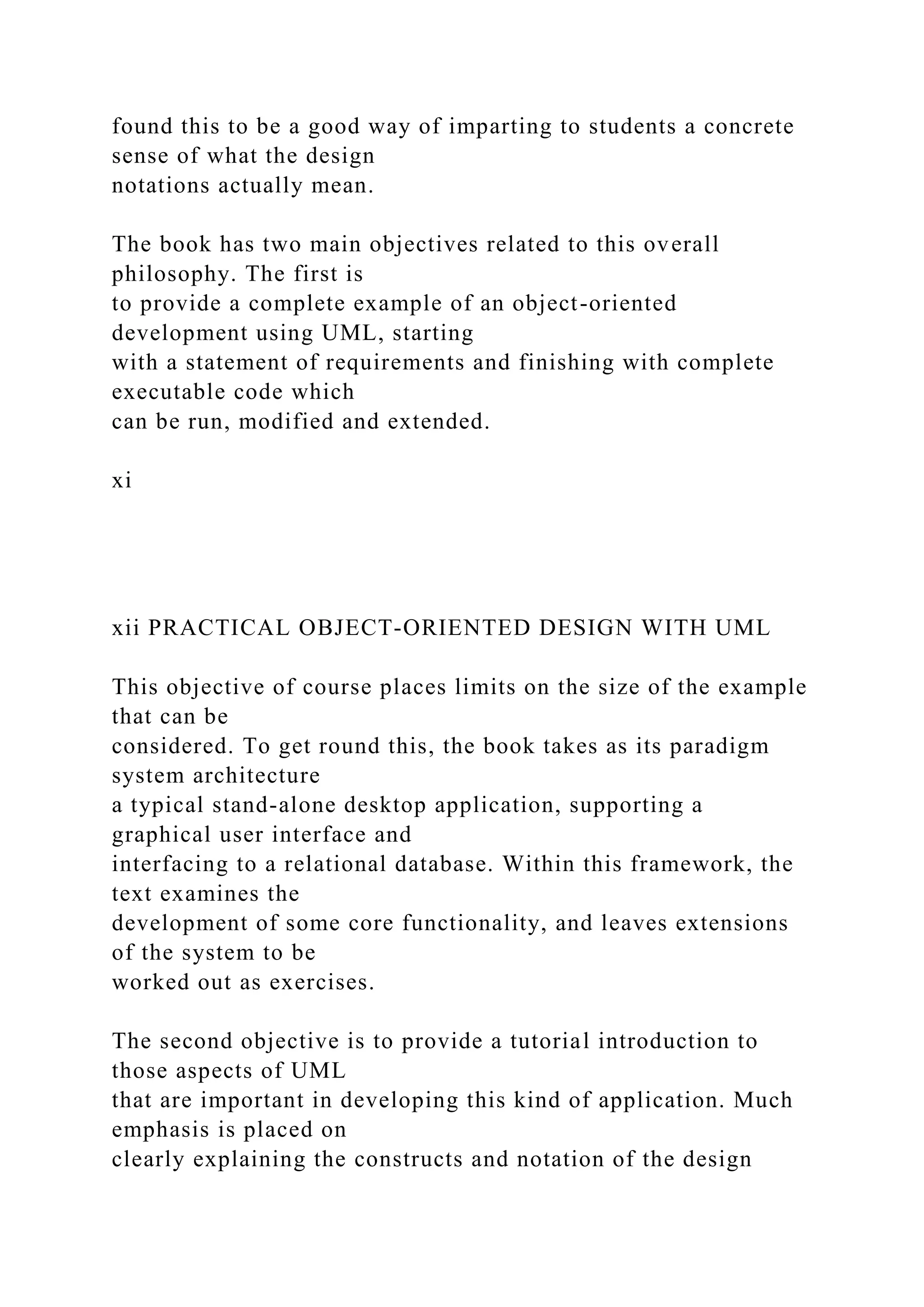
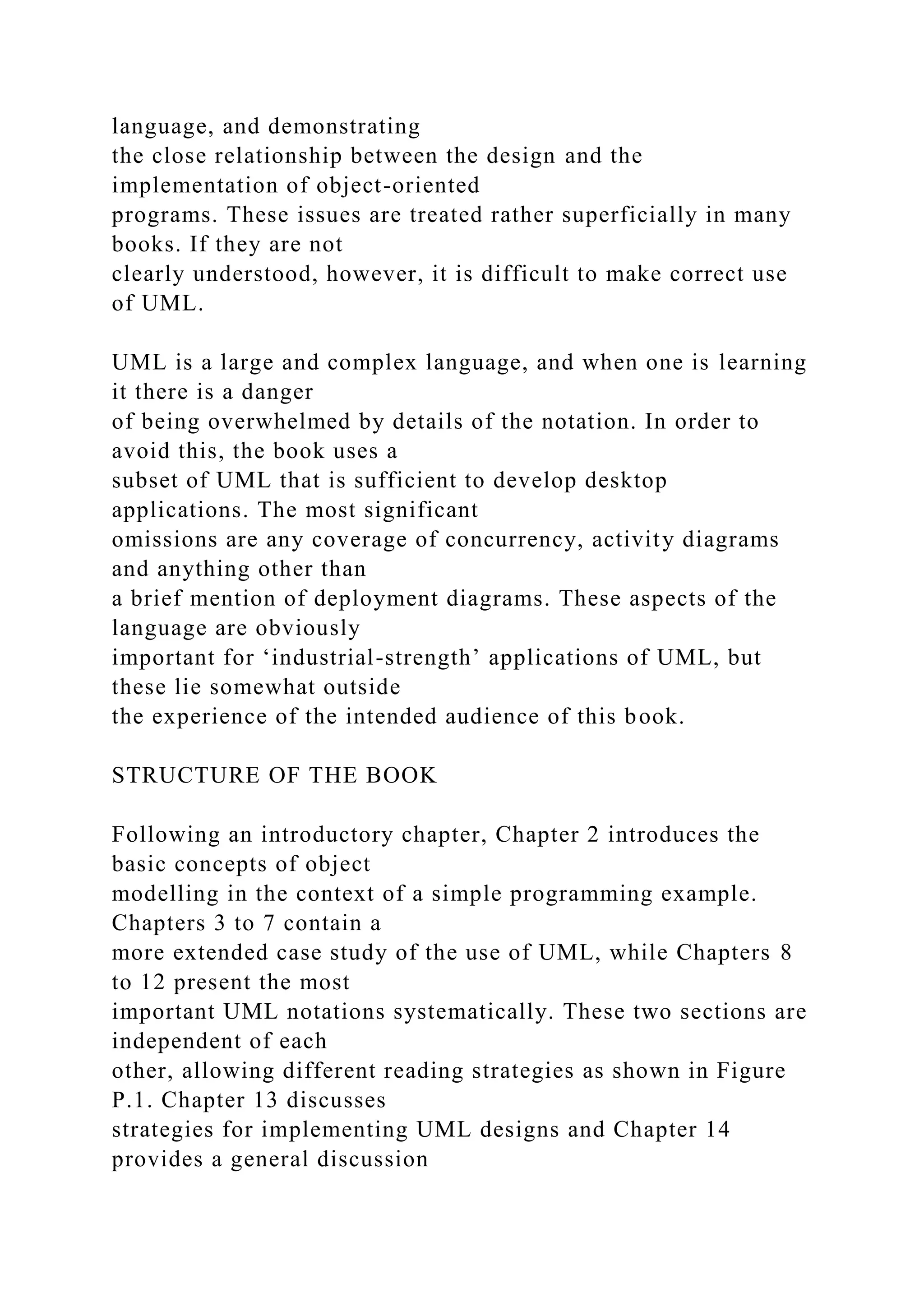

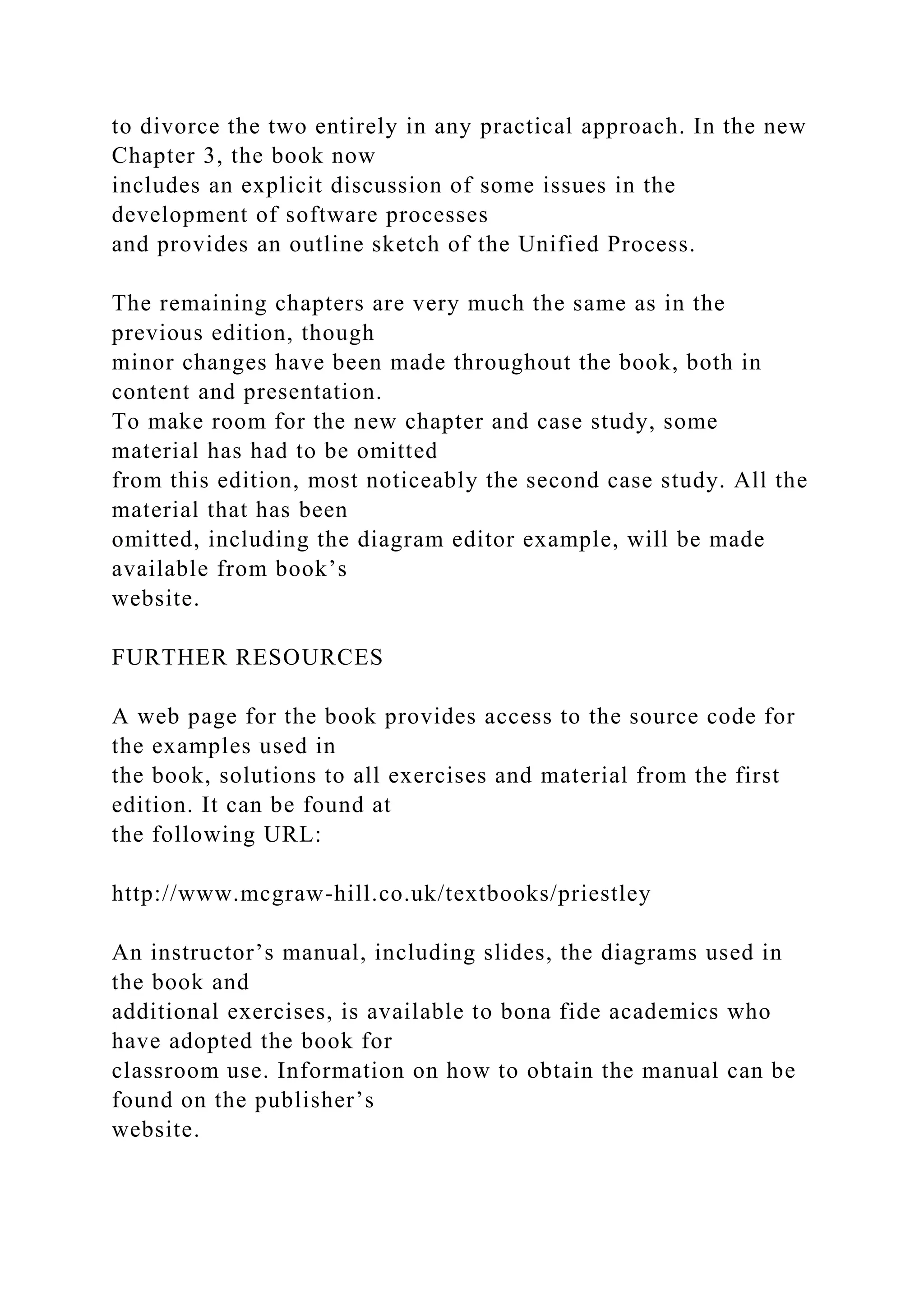
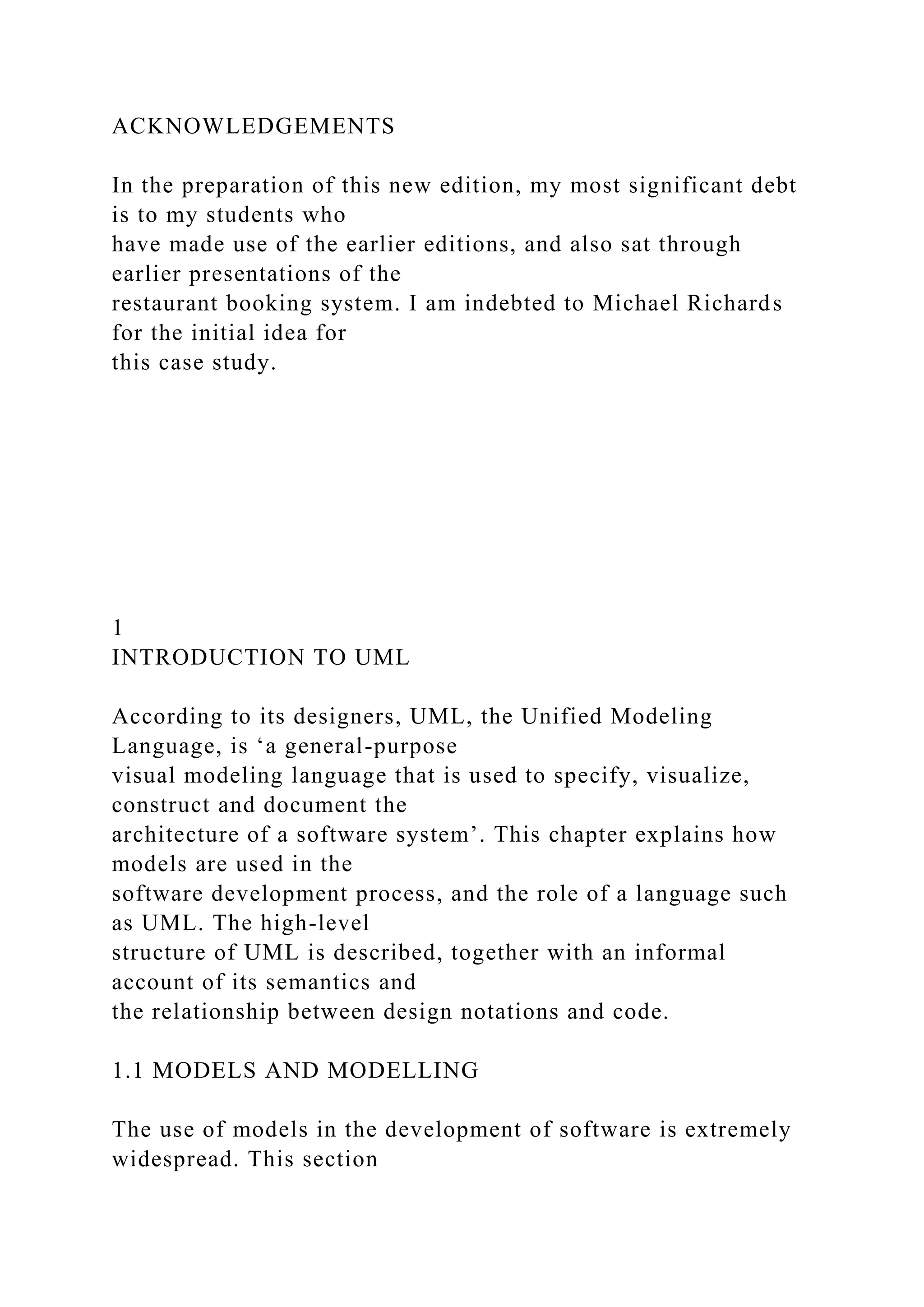
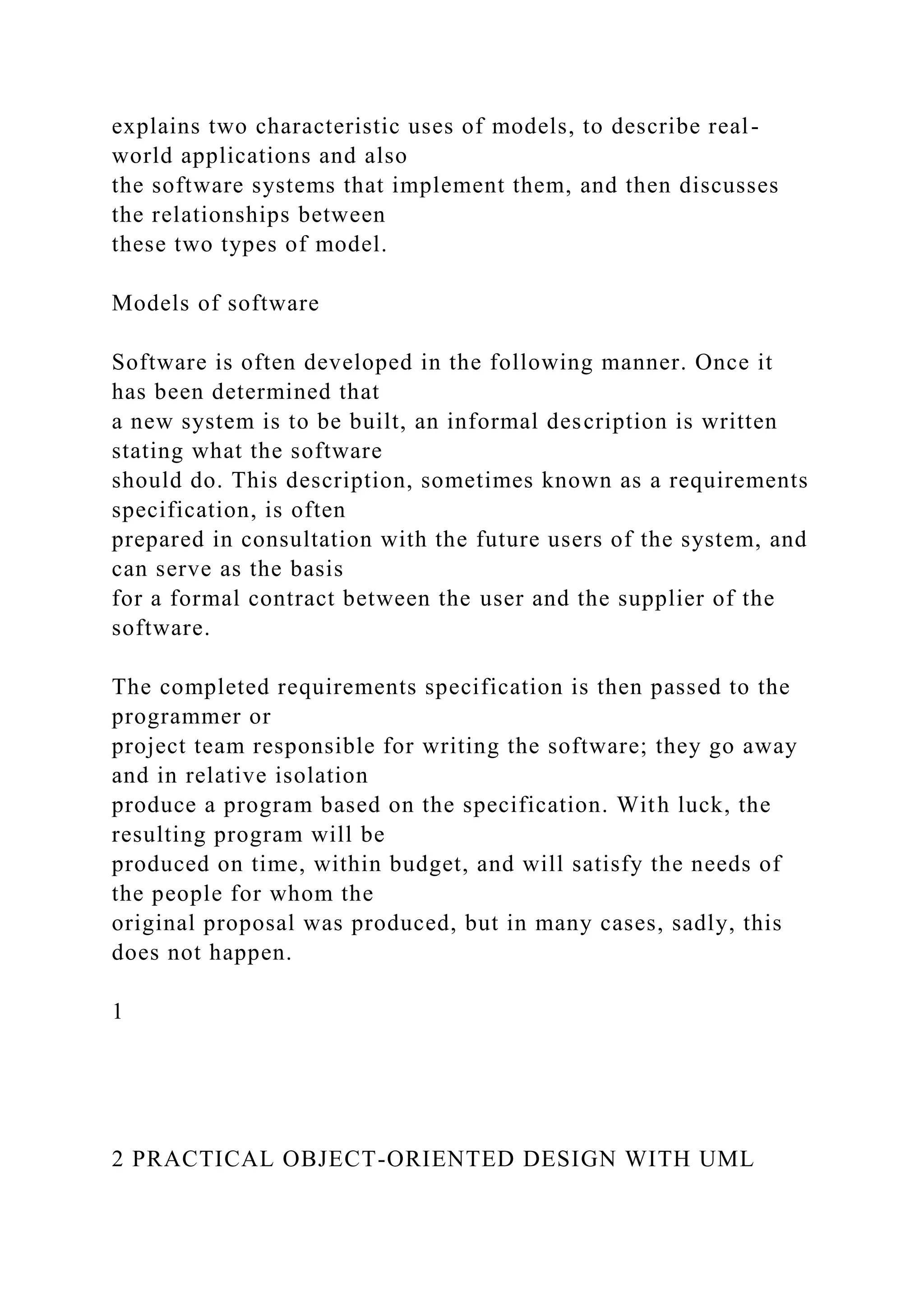
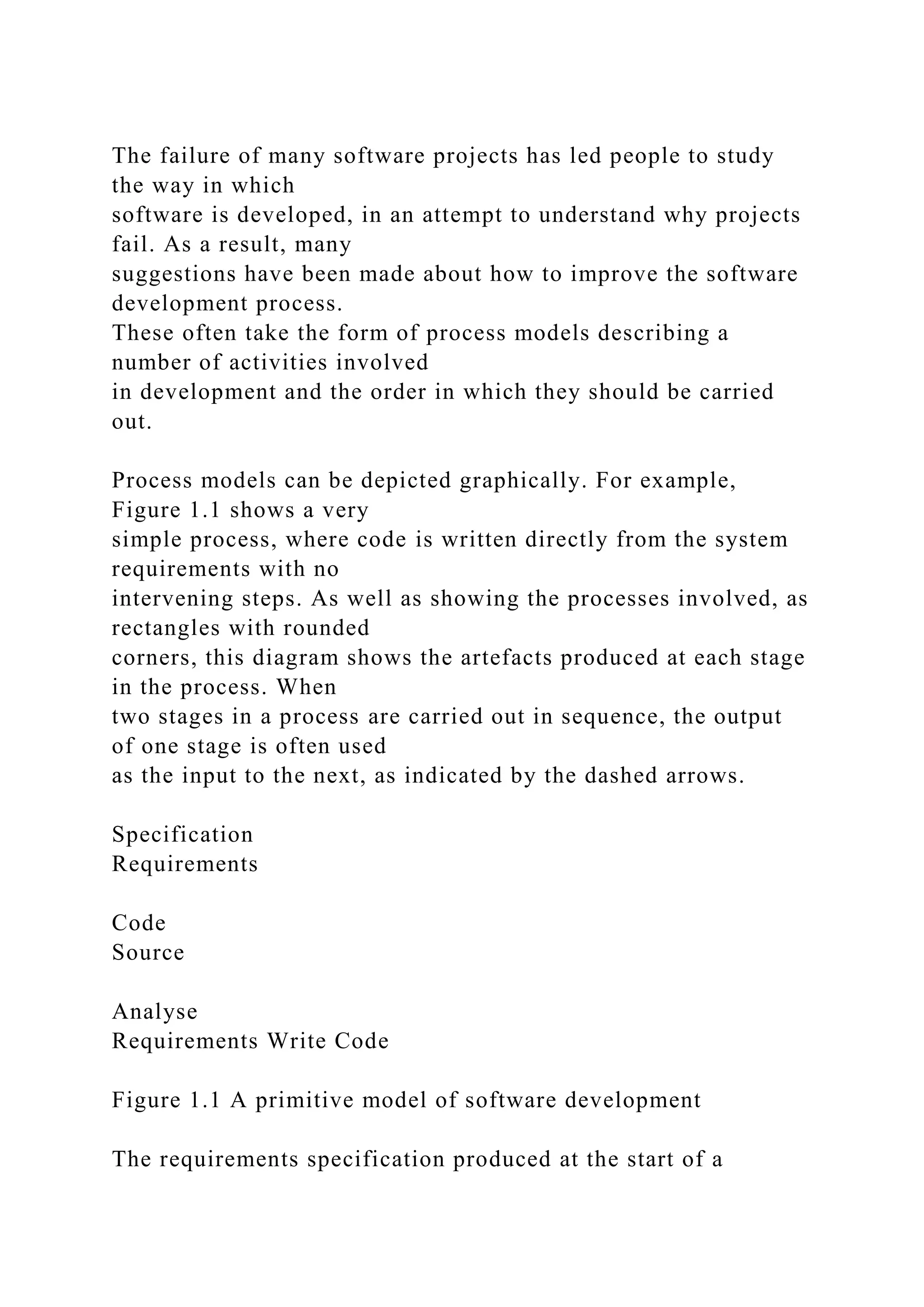
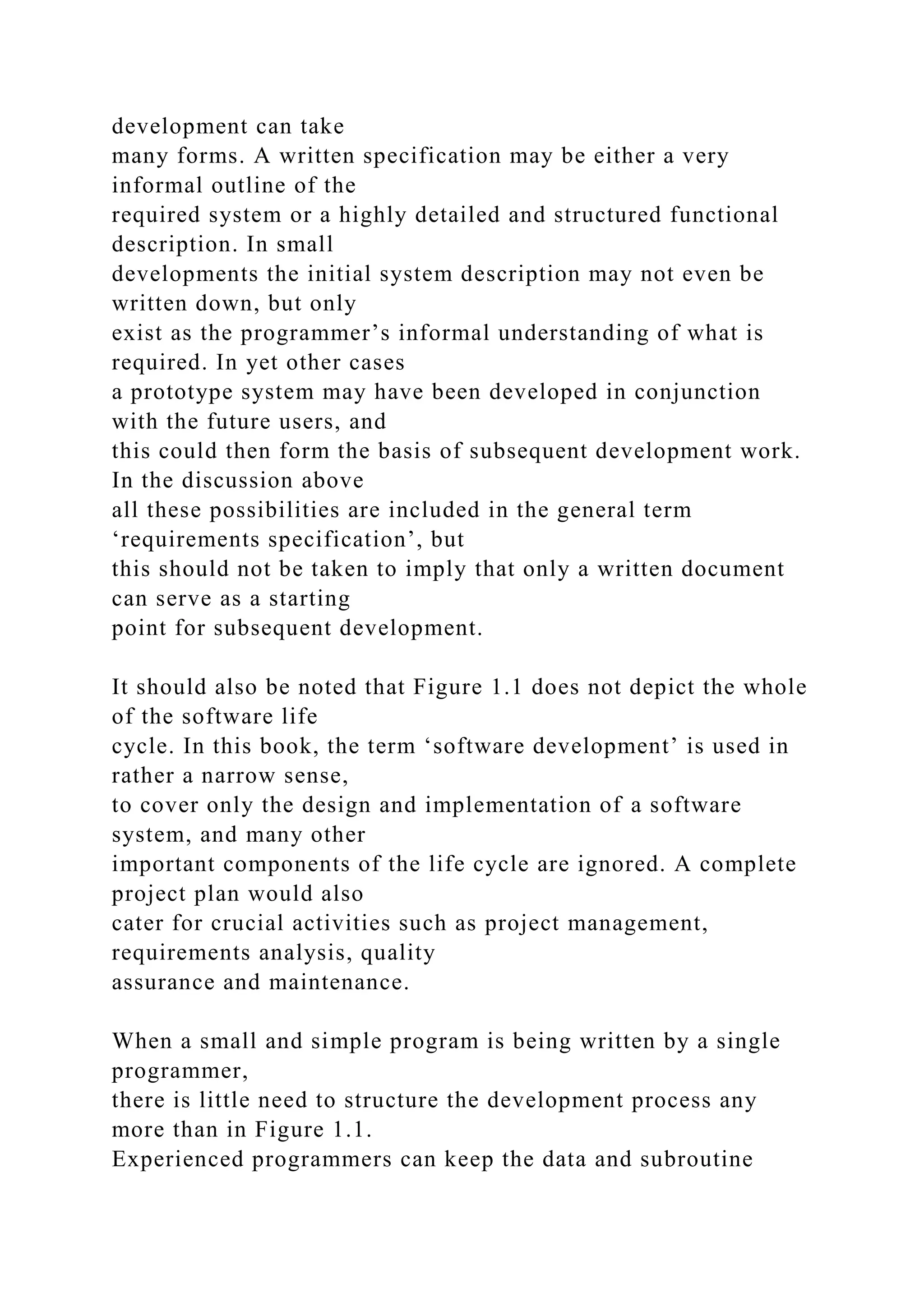
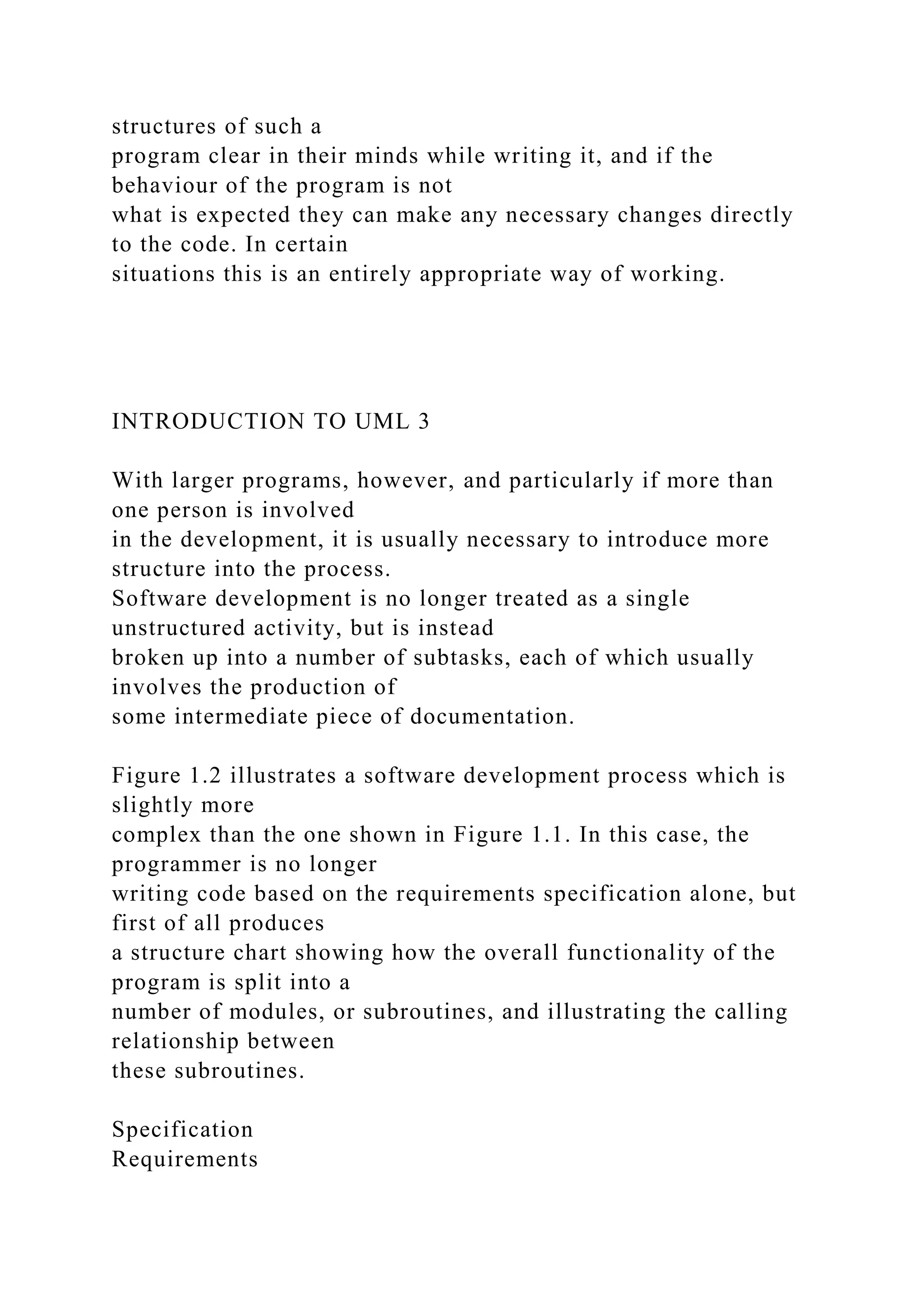
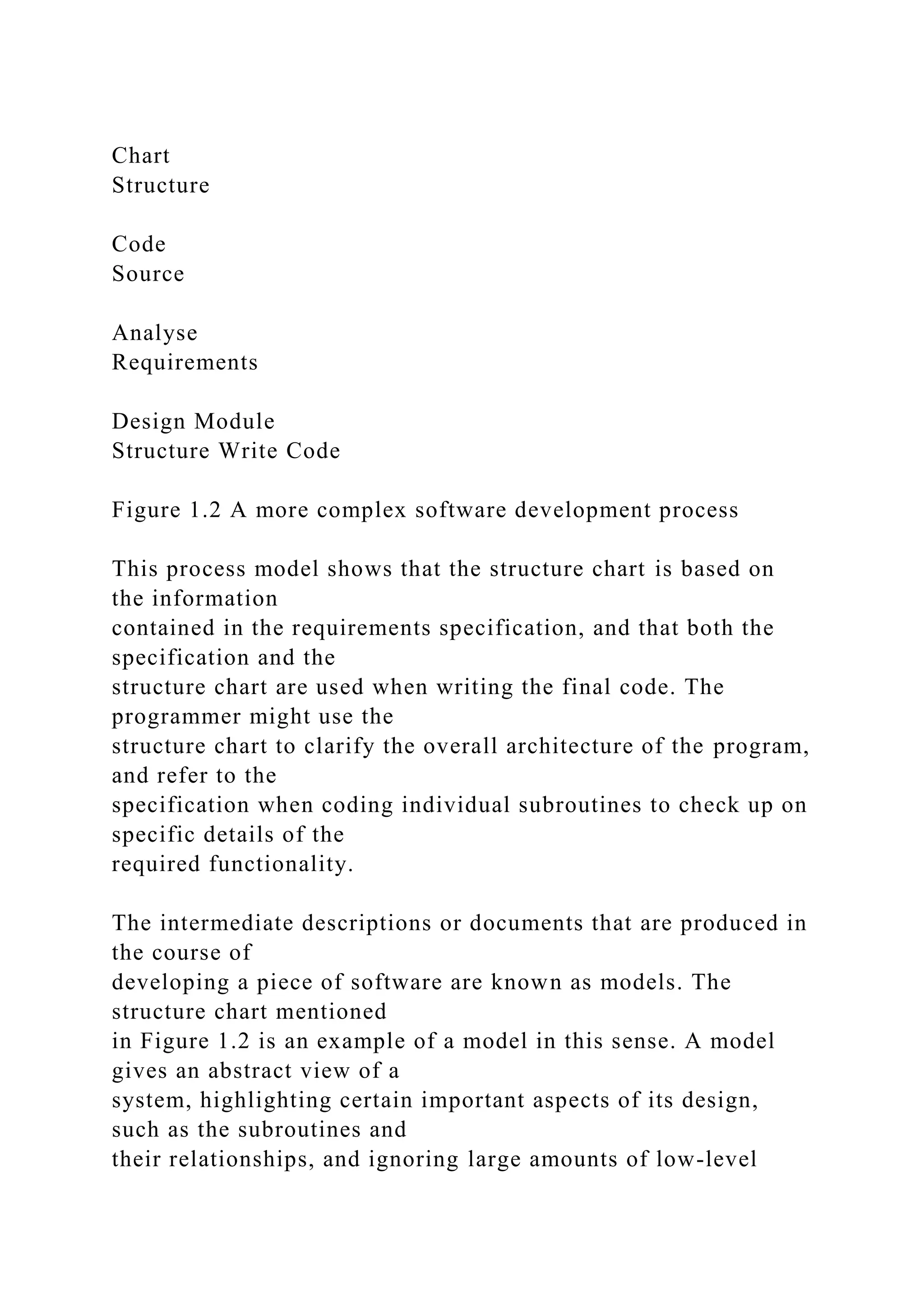
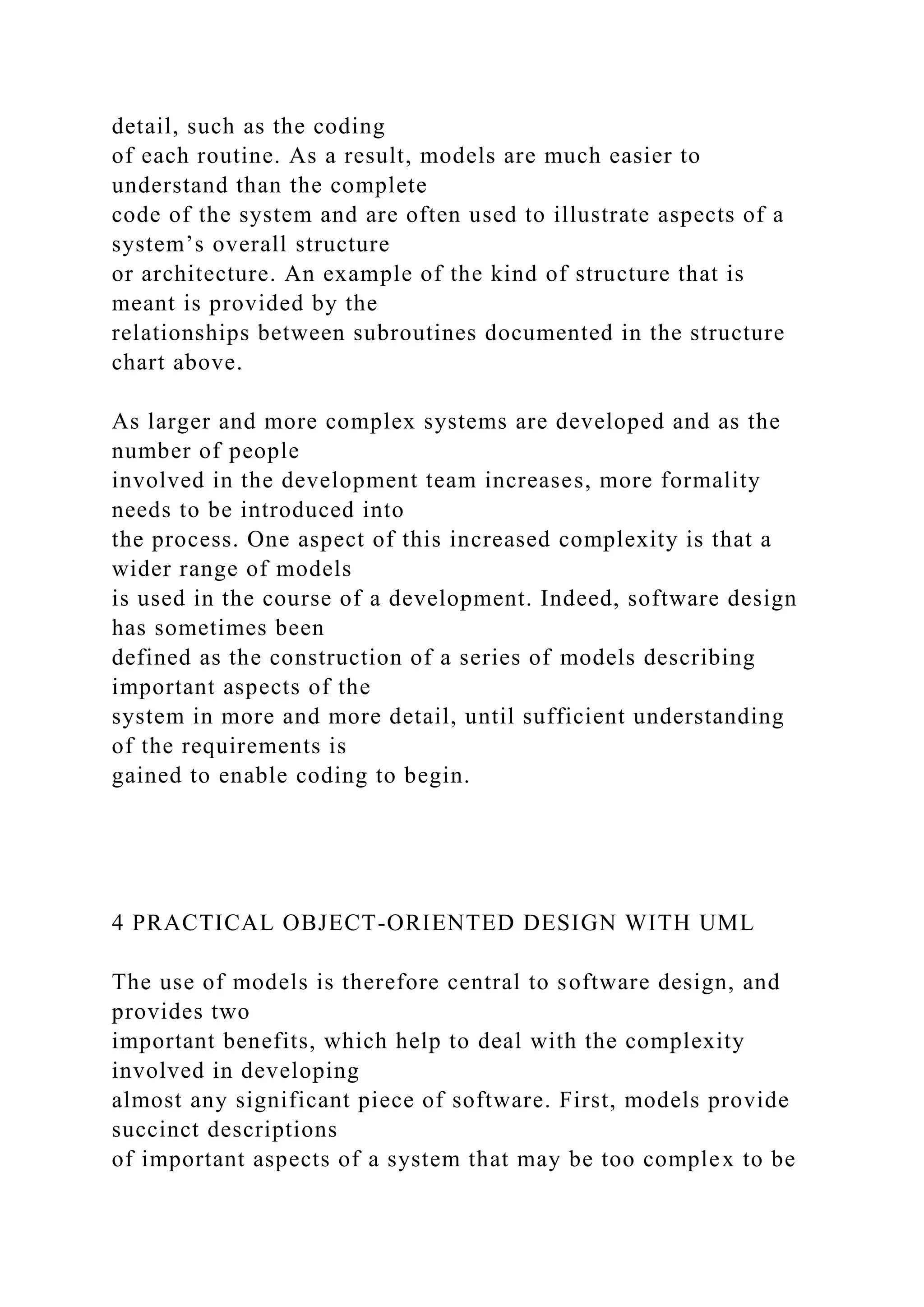

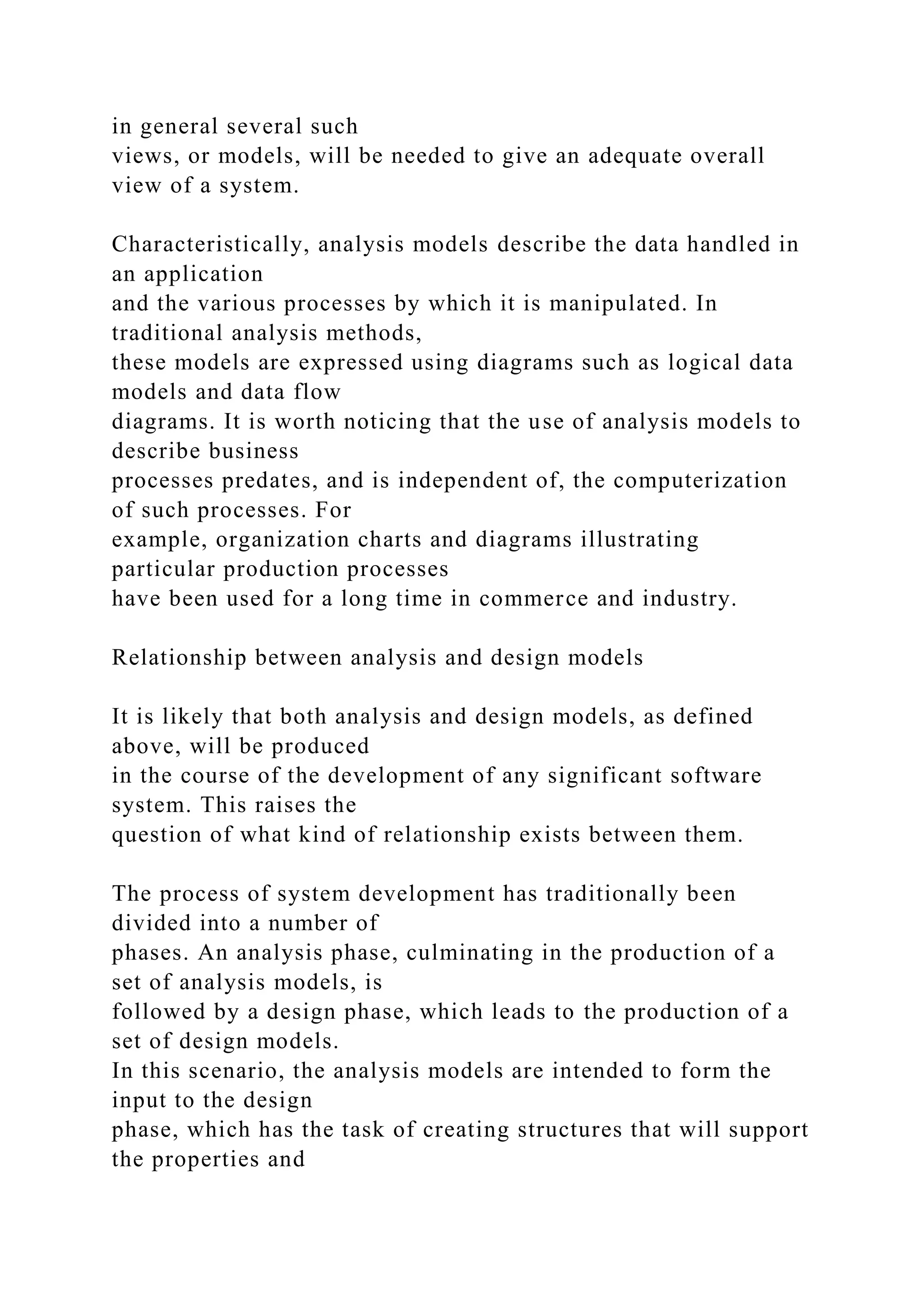

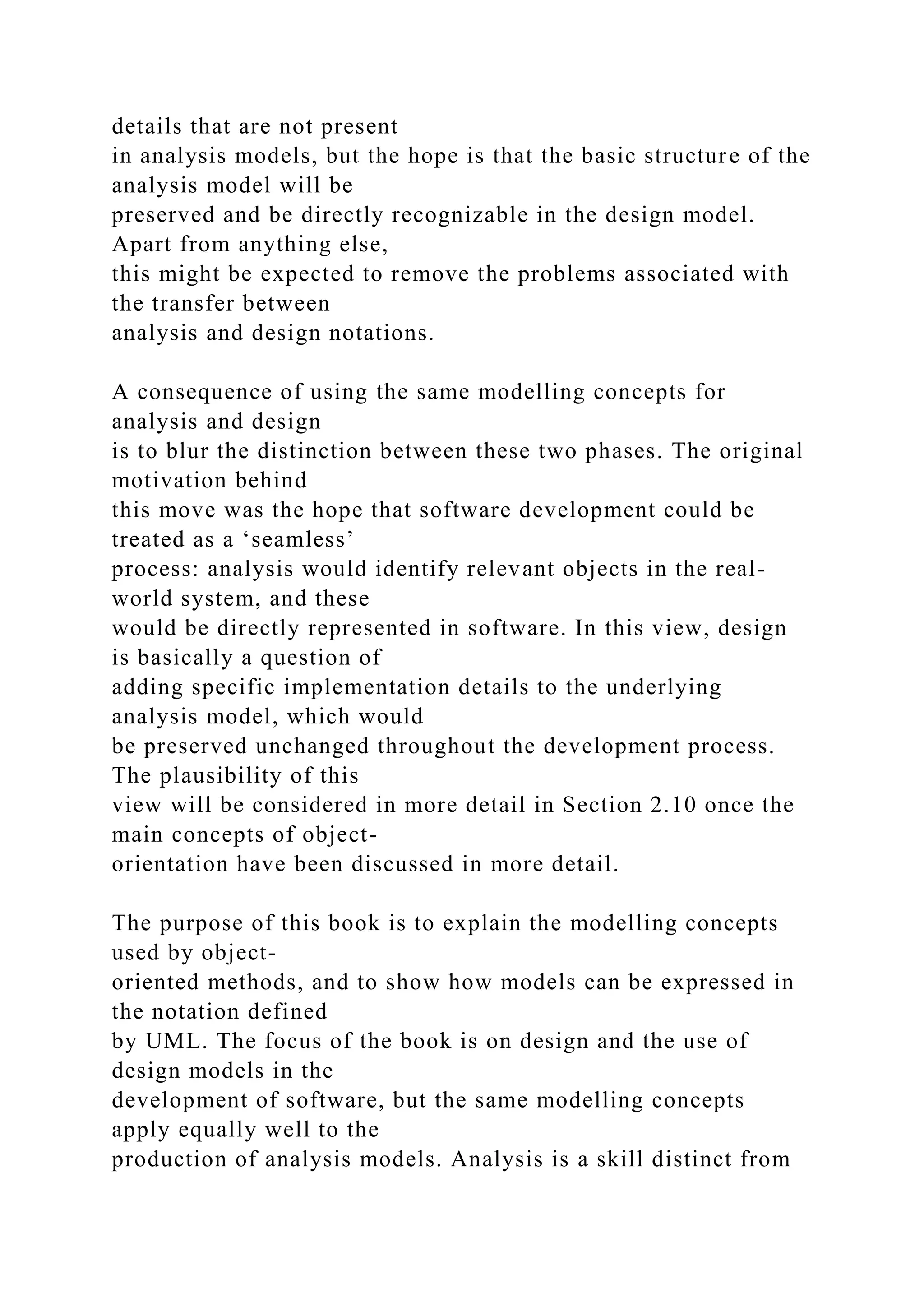
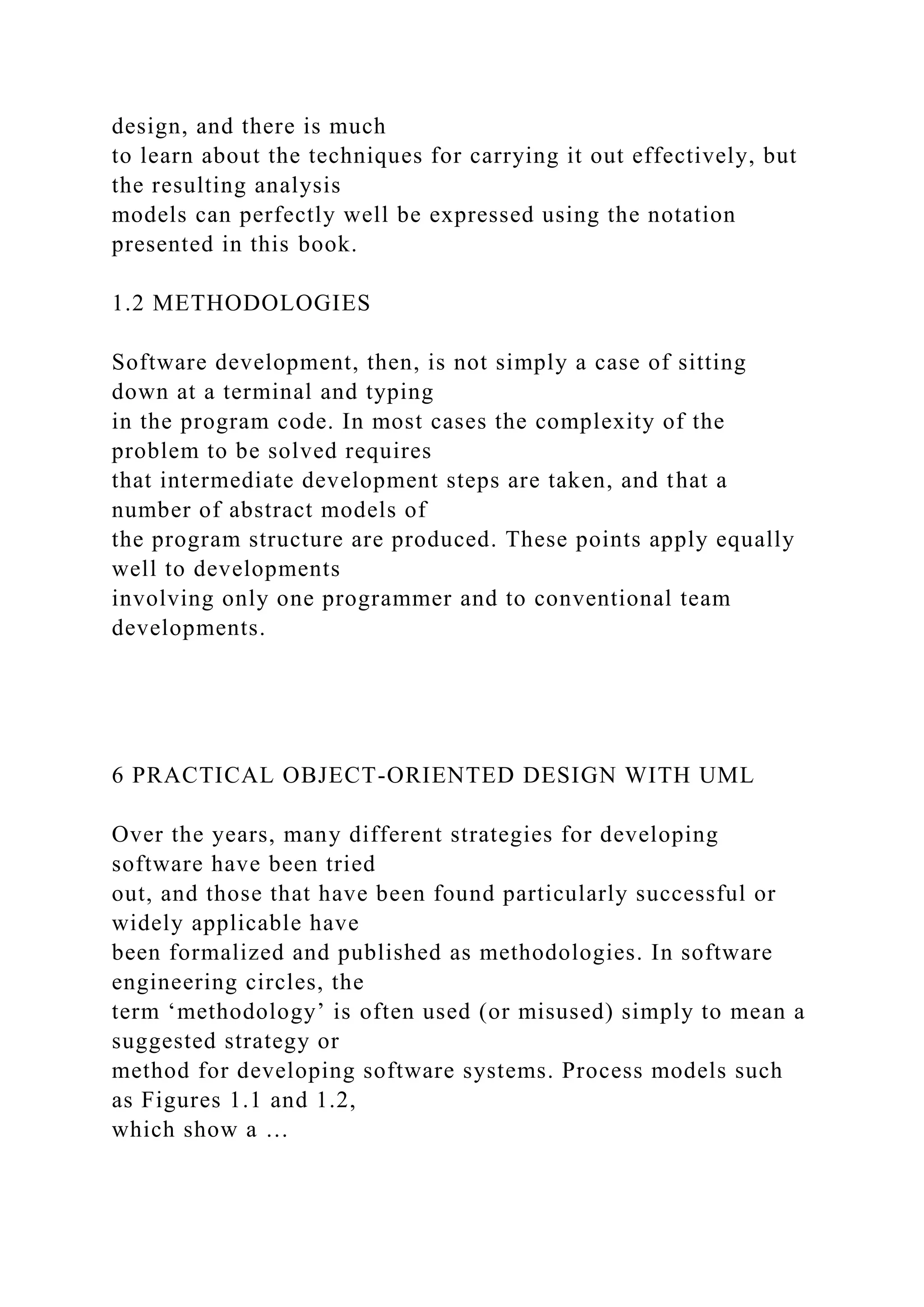
![FNU MOHAMMAD
Katy, TX 77449 | C: 8323356277 | [email protected]
February 01, 2020
Lamar University
RE: Webmaster
Hello Dr Andrei,
I am writing today to express my interest in your recently
posted opening for a new Webmaster. I am
looking to apply my skills and abilities to a challenging,
growth-oriented position with a leading
University like Lamar while continuing to build my academic
foundation.
My previous experiences have allowed me to develop HTML5
and project management abilities. I am
eager for the opportunity to learn from and support your team
by applying my critical thinking,
decision-making, and collaboration skills.
My focus, as an aspiring professional, is to utilize my strengths
in marketing to make a positive impact on
the overall organization. I enjoy gathering, organizing and
analyzing information, working in groups, and
contributing to project strategies. I believe these skills will be
beneficial in Webmaster role while further
enhancing the excellent reputation of Lamar University.
Please review my attached resume for additional details. I look
forward to hearing from you to discuss
the possibility of joining your team.](https://image.slidesharecdn.com/assignment1fnumohammadl20495160businessmodel2fo-221129184647-8ca5de01/75/ASSIGNMENT-1Fnu-MohammadL20495160BUSINESS-MODEL-2Fo-docx-32-2048.jpg)
